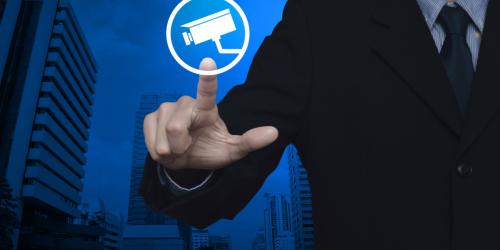In a recent blog post, we discussed how credibility is key in personal injury actions. In this blog post, we explore this further by citing examples where a plaintiff’s credibility has been seriously compromised by video surveillance.
Video Surveillance and Privacy Rights
Video surveillance seems to be especially prevalent in cases involving claims for chronic pain because the reporting of chronic pain to medical professionals is often seen by insurance adjusters to be “subjective,” and thus subject to challenge. It is not uncommon for the defendant’s insurer to hire a private investigator to “tail” the plaintiff and video their daily activities in search of evidence that may compromise the plaintiff’s claims of impairment. Such surveillance can go on for months, or even years. Almost universally plaintiffs are unhappy when they find out about this surveillance and consider it to be a gross violation of their privacy. However, you should know that surveillance from a public space is legal in Alberta. If a plaintiff is claiming chronic pain and states that he or she cannot lift or carry heavy objects, it is not uncommon for the plaintiff to be videoed coming and going from the grocery store with bags of groceries. If the plaintiff claims that he or she cannot twist their torso fully, surveillance may be made of the plaintiff doing tasks such as minor car repairs requiring full body flexion.
Cases where Video Surveillance Affected Damages Awards
In this recent Alberta case, upheld on appeal, the plaintiff was videoed in both of these situations and, based this evidence; the judge found that the plaintiff was untruthful. As a result, the plaintiff’s claim for damages for loss of future income was cut off as of the date of the video surveillance because the judge ruled that the video was good evidence that the plaintiff had recovered and could have worked as of this date. In this Alberta case, the 21-year-old plaintiff was out walking when he was struck from behind by a truck and thrown into a ditch alongside the roadway. He claimed persistent low back and shoulder pain, but the judge, on the basis of surveillance evidence, found that he was not a credible witness. The video surveillance recorded him doing heavy lifting relating to the laying of sod in his yard, being on his hands and knees laying and cutting the sod, and bending over up to 90% from the waist picking up, carrying, and laying down the sod. Because of the finding that he lacked credibility his general damage award was significantly reduced. In this recent Alberta case, the plaintiff claimed significant damages for chronic pain suffered after a car accident, but the defence produced a surveillance video which filmed her moving into a new home. In the video, she was carrying heavy boxes and household items, extending her arms and legs, and elevating her arms and legs, all without apparent signs of pain. The judge noted that her complaints of chronic pain were entirely self-reported to her doctors and the court, and contradicted by the video evidence. She was found to be lacking in credibility and, as a result, received a significantly lower general damage award than she otherwise could have expected.
Protecting Yourself from Misleading Video Evidence
Most plaintiffs are scrupulously honest, and video surveillance does not impair their case to any extent. Video surveillance can, however, be taken out of context or edited inappropriately to challenge a plaintiff’s credibility. To protect clients from such defence tactics we frequently take the following steps:
Get full copies of all video footage taken of our client
We secure a copy of the unedited footage from the defence lawyer and review it carefully for irregularities or tampering. We also review all the footage to confirm whether there is any footage that is consistent with the injuries our client is claiming. It is not uncommon for injured people to put on a brave face while in pain and try to do more than they really should while they are recovering. So, for example, doing 30 minutes of yard work might lead to the need for a day in bed to recover. This raises another point that is worth mentioning. If you are involved in a claim for personal injury damages you must take care to follow your doctor’s advice and the advice of your rehabilitation specialists. If you do not, you run the risk of the defence lawyer arguing that your failure to follow your treatment plan either made your injuries worse or prolonged your recovery time. Aside from jeopardizing your recovery, both of these things can have an impact on your damages award.
Hire an Expert to Review all Footage
In some cases, it will be appropriate to retain an expert video evidence consultant to review the edited and unedited video footage and report on any irregularities, such as selective filming methods. Again, our goal is to make sure that the judge is provided with the whole story of your injuries and not just selected evidence that supports the defence’s case.
Challenge the Use of Video Evidence
There may also be situations where it is necessary to challenge the admissibility of video evidence. For example, if video footage is produced late in the proceedings and amounts to an “ambush,” or if it was obtained by trespassing on the plaintiff’s property, or through other illegal means, and there may be a good argument that it should be excluded from evidence entirely.
The bottom line is that if your case involves video surveillance, you would be wise to get legal advice and representation to make sure that the evidence of your injuries and the impact they have on your life are accurately and properly represented. If you have questions, we are here to help. Contact us for a free consultation.

